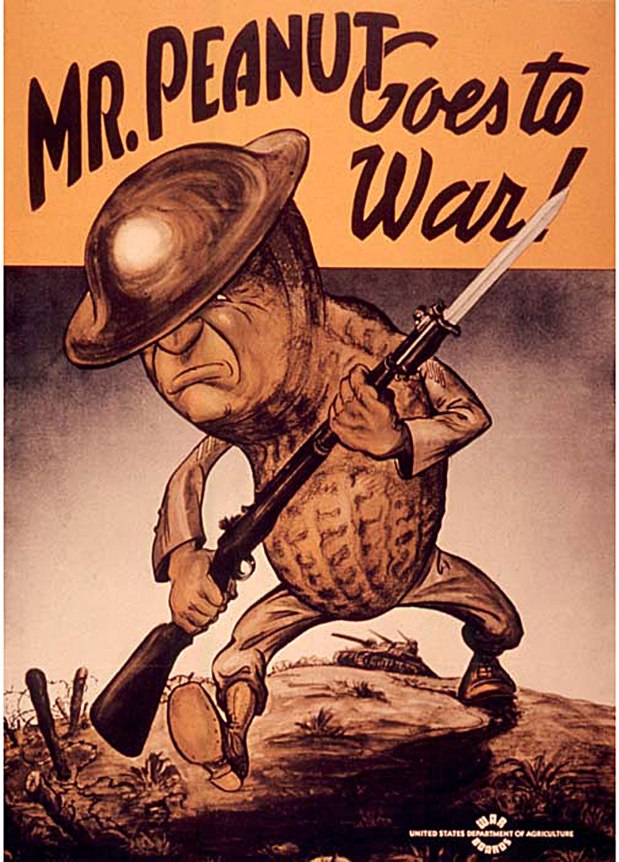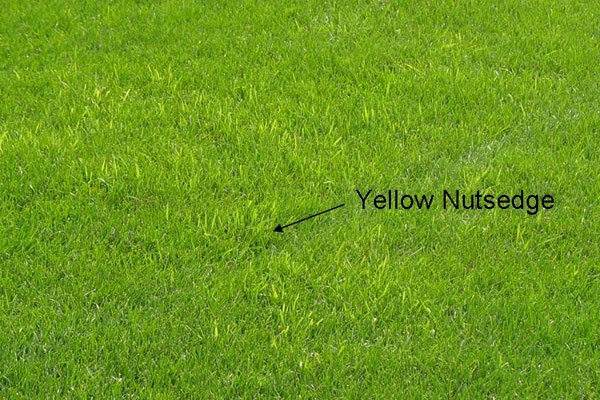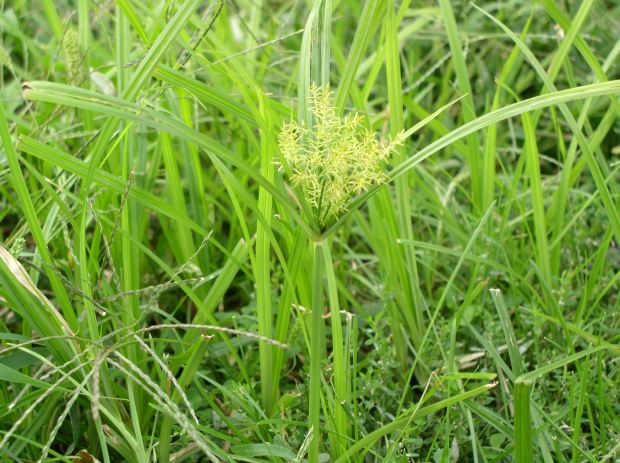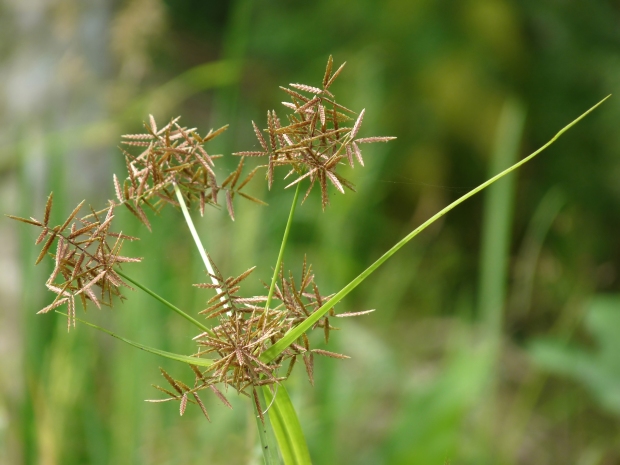 It is another great week at The Wonderful World of Weed Man. We hope you are enjoying your summer in spite of the terribly weird weather temps. Alas, that is Idaho. The weather has already improved since I started writing this article.
It is another great week at The Wonderful World of Weed Man. We hope you are enjoying your summer in spite of the terribly weird weather temps. Alas, that is Idaho. The weather has already improved since I started writing this article.
Last week we touched on a perennial weed we find very difficult, but possible to treat – Canadian Thistle. This week, we wanted to talk about another lawn weed we come across quite often – Nutsedge. Below is a picture of nutsedge in a lawn via the University of Minnesota.

Every time I am on the lawn and diagnose a ‘grassy weed’ someone is curious about as Nutsedge, I get a look like I’m teasing them. Peanuts in my grass? Yes, and no… This sedge gets its name because in some cultures it is actually a crop that is edible. Nutsedge is cultivated for its tubers, called earth almonds. Apparently all parts of the plant development are edible and the tubers taste like almonds. Who knew? Mr. Peanut is wreaking havoc on your lawn!
Nutsedge is actually somewhat easy to treat. It has its own set of difficulties, but in comparison to thistle or crabgrass it is easier to deal with. It is referred to as swamp grass, sometimes called water grass. Other names include Nutgrass, or Peanutgrass. Nutsedge, though it looks like grass, it is actually a sedge. They look similar but are distinctly different plant types. Nutsedge has three long blades that protrude from the base of the plant. They grow very quickly and are slightly yellow/light green in color. Because of the growth and color of the plant it generally stands out in your lawn, especially if you haven’t mowed in a few days. Standing out so easily in your lawn will quickly disrupt your beautiful uniform colored lawn.

This particular plant can reproduce itself in a variety of ways: through seed, rhizomes, and tubers. Nutsedge is a perennial plant that will typically emerge in May in our area when it begins to really warm up. It will continue to grow and develop until the first frost in the fall. The cold weather will kill the above ground portion of the plant, but the tubers will survive underground over the winter. The dormant tubers will germinate and emerge throughout the next year or remain dormant in the soil for longer.
Let’s take a moment and analyze Nutsedge by the numbers: 1 seed can turn into a basel clump (the base of the plant) which produces umbels (3 blades). The umbel can produce 1500 seeds in one season. In addition, the plant will reproduce itself via tubers that can spread out rhizomes. The tuber will produce the rhizome which can produce 1900 new plants which can multiply to 7000 new tubers in one season. Each tuber can have up to 7 buds/rhizomes with the reserves to sprout them all. Essentially via rhizome, tuber and seeding, 1 seedling can create a whole plant system capable of producing 90,000 seeds within one year.

Great, now you know what Nutsedge is and that it multiplies like rabbits, what do you do? Well Howard Garrett, the ‘Dirt Doctor’, states “There is only one guaranteed, foolproof method to completely kill Nutgrass,” he recounts: “First, dig out every tiny piece of the plant including the seeds and nutlets (tubers). Make sure you sift the soil through a mesh screen. Dump the collected material on the driveway and burn it. Sweep up all the ashes and seal in a concrete box. Drive to the coast and dump the sealed box 20 miles off shore.”
That is one labor intensive surefire way to eliminate Nutsedge. Barring the drastic, what does the average homeowner need to do.
Cultural Practices: Remove the cause of your waterlogged soil. Aerate, change your watering habits, or fix your leaky sprinkler pipe.
I referred to Nutsedge as a swamp grass or a water grass earlier in this article. Nutsedge will show up in soils that are waterlogged
The reason I bring it up, is that the Treasure Valley climate is considered a semi-arid or steppe region. However, we are on the low rainfall side of the spectrum. To be classified as a desert the area needs to have 10 inches or less of rainfall every year. We get 11 inches. So for all intents and purposes we are a desert. All the responsibility without the cool title or benefits!
Yet even in our climate, Nutsedge can grow if it has a constant source of water. This can be from poor drainage in the soil, watering too frequently, or you have a sprinkler pipe leaking. Leaky pipes are easy enough to fix. Poor drainage can be a result from a compact soil. An aeration will help relieve this issue. However, a vast majority of the time that we see Nutsedge, it is on a lawn that is being overwatered. Unfortunately, some homeowners’ lawns have become a main tributary for the Boise River via their ever flowing sprinkler system. Without that constant source of water, Nutsedge, would have a hard time growing naturally.
The modern sprinkler system has done wonders for moving water in an efficient way to help with lawns, but it has taken away our ability to think like a farmer or remember our 3rd grade botanical lessons. When summer rolls around and temps get about 100, we think our lawns need constant watering. Your lawn does not like that often of a watering. But you know what does? Insects, fungus, disease….and certain weeds like NUTSEDGE. It’s easy to get carried away with the watering and slowly bad things will begin to happen to your lawn.
Avoid overwatering your lawn. We live in a desert, but if you water strategically, your lawn will get the moisture it needs, and unwanted non-desert swamp plants will not. 3 times a week for a good period of time is all you need even when it is REALLY, REALLY HOT. Not 4 times a week, nor 5 times a week. Not daily, NOT TWICE DAILY! You get the point…
If you have questions about watering, please refer to an earlier article we published.
If you don’t get the waterlogged soil resolved, you will be fighting a losing battle. You have to solve this before any other resolution will be effective. Nutsedge will come back over and over and over again, worse each time.
Mechanical Practices: Pulling Nutsedge can become an exercise in futility unless you catch the plant early. When you pull on the Nutsedge blade, they will just detach from the tuber. The plant is still alive and has the reserves to produce more shoots. The key catching the plant at an early stage where it has to use up its reserves to produce new shoots before it can reproduce more tubers. Usually you can do this when it only has 3-4 blades coming up. Be warned: This is a very slow and arduous process.
You can also dig up the tubers and remove the plant through tillage. Again, not the best option for a lawn. Great advice for a garden area where digging up the weed will not disturb the surrounding plants that are wanted.
Another digging option exists that we are aware of: PIGS! Pigs love to eat the tubers of Nutsedge. They are very quick to find the buried tubers and will dig them up and eat them. This is probably not the best option for you finely manicured lawn though. If you happen to have a Nutsedge problem in a field though….
Chemical Practices: Really the most effective and quickest way to deal with Nutsedge is through herbicides. Currently, there are preemergents available to help reduce Nutsedge, but they do require a professional pesticide applicator. Unfortunately, preemergents for Nutsedge are not safe to use on turf grass….so post emergent is the best option for Nutsedge in the lawn.
You can kill Nutsedge with Round up, however, Roundup will kill everything else around it as well, unless you can spray the Nutsedge with surgical precision. Selective herbicides labeled for Nutsedge will work to kill it without killing your lawn! Selective herbicide is the way to go.
Always be careful when applying herbicides, and please read the label and follow directions accordingly. Better yet, hire Weed Man to take care of the issue for you. We can also help diagnose and advise on watering habits to prevent re-occurrences. Give us a call! 208-888-9911, www.weedmanboise.com #wecareforyourlawn